Laurent Rocuet, Director of Research & Development at Kiwatch, shares his views as an entrepreneur. This is an interview with a French company that innovates to bring new, useful services to its customers, in a sector where you might think everything has already been done.
The “deep” R&D that discovers and clears the way, exists only in the shadows.
Laurent Rocuet, R&D Director, Kiwatch.com
Can you describe Kiwatch in a few words?
Kiwatch is a young, innovative company created in 2011 to democratize video surveillance for the general public. This democratization is based on two key factors: the cost of acquisition, which has been divided by a factor of 5, and the technology, which has been simplified with access to services via a mobile application. We are the forerunners of the connected camera, the VSAAS, in Europe and worldwide.
We launched the service commercially in summer 2012, in BtoC mode via our online store. Since then, we’ve diversified, distributing our service on a white label basis (Zeop, Delta Dore…).
Over the years, a new area of service has emerged: video surveillance, a more friendly extension of the service: the children are home from school, I keep an eye on my dog, I look after my elderly mother…
Is it still possible to innovate in such a well-established sector?
Over the past three years, a profusion of solutions has emerged. The rise of this type of service is recent, with a new key just a few months old: the exploitation of artificial intelligence services.
Video has become data that can be manipulated and exploited with the arrival of the cloud, its computing power and low-cost, high-performance processors. We’re in the eye of the storm! It took the last 20 or 30 years to exploit and industrialize the processing of textual data, so it will take a few more for video to discover its potential.
The rise of “other” technologies (cloud, AI, processor, multiplication of streaming formats, mobile…) has broken a form of “confinement” of video and video surveillance by “opening up” new potentialities.
Is research and development a major focus at Kiwatch?
It’s both the company’s culture, built on innovation and R&D, and an essential key to growth in the face of players whose R&D expenditure runs into billions. Surprisingly, it’s possible! A small, focused team with the right skills and the right mindset can hold its own against the American majors. Look at Dropbox, Talend and so many others…
Tell us about your fundraising
This is Kiwatch’s third round of fund-raising. This time, the aim is to leverage the funds already invested to ensure Kiwatch’s national development. R&D has been stepped up since January. A potential fourth round of financing is also envisaged, to enable Kiwatch to expand internationally.
Do you see research and development as a growth driver for Kiwatch?
We’re in the technology business, and R&D is the bare minimum.
What does innovation mean to you?
Deep” R&D, which discovers and clears, only exists in the shadows. What is in the light is known. When we built our first service in VSAAS (i.e., with audio/video streaming systematically through our servers), we spent 6 months wondering whether we were making the right choice , because this architecture was at odds with the technical principles of home automation and conventional video surveillance.
A word from the expert
Small and medium-sized companies under 8 years old that invest their resources in research and development can qualify for JEI (Jeune Entreprise Innovante) status. The company benefits from exemptions on corporate income tax and territorial contributions. These advantages can be combined with those provided by the Research Tax Credit (CIR), which can be used to finance patenting procedures, among other things.
Criteria for becoming a JEI :
- be a small or medium-sized enterprise (SME)
- be less than 8 years old: at the end of the 7th year of existence, the company is no longer a JEI,
- not have been created as part of a restructuring, business expansion, takeover or business merger
- research and development expenses representing at least 15% of deductible expenses, except for expenses incurred with other start-ups
Exemptions for start-ups :
- total exemption on IR or IS for the 1st year,
- 50% tax exemption for the following year,
- CFE, CVAE and property tax exemptions for 7 years, subject to local authority approval.

